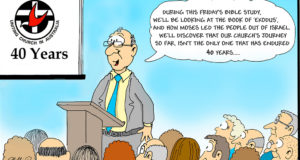The word might be in the church’s name but “uniting” carries a profound sense that there is still work to go before a “united” destination. Should we still be uniting with other denominations?
Rev Janet Staines offers her perspective.
When the Uniting Church inaugurated in 1977 there were great aspirations to continue the work of “uniting” with other denominations as a witness to the reconciling work of Christ. Since joining the Uniting Church nine years ago I have heard angst and grief that the church has not fulfilled what it had set out to do.
There’s a sense of loss, confusion and resignation that this inherent call to union hasn’t been achieved. We’re left with the lingering questions: “Is this dream possible?”,
“Is this still our call?” and “What does ‘uniting’ look like anyway?”
Joining at this point of the church’s life, I have understood “uniting” to be more about a reconciling process or stance. Uniting is not just concerned with ecumenism but with our core DNA to be a reconciled and reconciling people.
The Basis of Union captures the gospel as a ministry of reconciliation and I believe the church’s call in the polarising spaces of our world is to reconcile and make new.
The questions we are left to pursue then become concerned with the disparate and often contested spaces: How are we uniting first and second peoples? How are we uniting people who have been disillusioned and excluded from the church back into fellowship? How are we uniting with other faiths and other denominations in working for justice? How are we uniting with community groups in developing compassionate communities?
A few years ago, the chairperson of a local community group asked the church for help to bring about some peace amongst its staff and volunteers. While not a church attender this man believed that the church was equipped with the skills to bring about reconciliation and unity.
Just recently our church participated in a “Walk on Country” to Palm Island and Innisfail to increase our understanding of Indigenous culture and build relationships with our First Peoples. Last year three churches and five community groups in our area gathered during Refugee Week to create welcome with listening circles and cultural music so newcomers might experience the hospitality of the local community.
When the three churches joined together it was decided the new church would be called the “Uniting”, not “United” Church because the task before us was not yet complete. The word “Uniting” does not just define who we are by name, but who we are called to be.
The world more than ever is in need of the reconciling presence of God’s people who are travelling on the way to their promised end.
Rev Janet Staines is a minister at Sherwood Uniting Church and
has an interest in community development and social justice issues.
 JourneyOnline
JourneyOnline








The theological and cognitive understanding of ‘Uniting’ is crystal clear as Rev.Janet Staines mentions in her article. The ecumenical movement of Uniting was dramatic and inspiring 40 years back. The functional part of uniting is not same as in 1977. We are less focused on uniting churches to become one. Instead we are more focused on social issues working with other churches. Do we shift our focus as we celebrate our 40th birthday? If uniting is our DNA, what kind of progress we have made in uniting churches beyond three? Are we inward looking to keep our identity or we willing to give up our identity for uniting churches? Is our theological and governmental structures of Uniting church a catalyst to unite churches or a stumbling block to do it? These questions are raised when I read this article. Good reading!